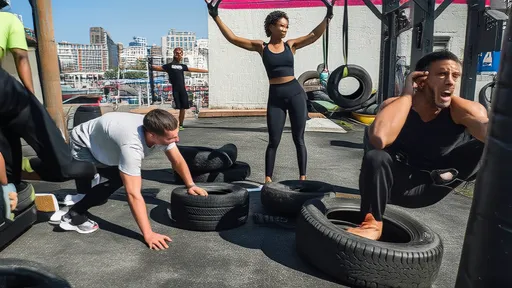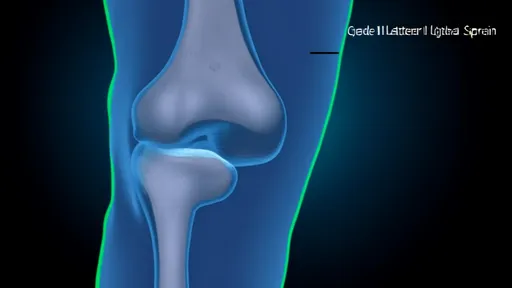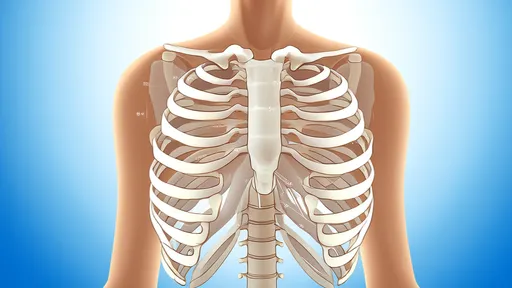In an era where office workers spend increasingly long hours tethered to their desks, a peculiar fitness trend has emerged from Japan that turns mundane stationery into tools for wellness. The "Stationery Workout" movement, particularly its signature "Ruler Balance" technique, has gained surprising traction among white-collar professionals seeking discreet ways to stay active during marathon work sessions. This unconventional approach transforms everyday office supplies into instruments of physical conditioning, blending productivity with subtle exercise.
The concept originated when Tokyo-based ergonomics specialist Dr. Haruto Yamamoto observed office workers unconsciously fidgeting with rulers during meetings. What began as absent-minded play revealed unexpected benefits when studied systematically. "The ruler's straight edge creates perfect leverage for micro-movements that engage stabilizer muscles," explains Yamamoto, whose 2018 research paper sparked the trend. Unlike traditional exercise equipment, stationery items offer workplace-appropriate discretion while triggering similar neuromuscular activation patterns.
At its core, the Ruler Balance technique involves positioning a standard 30cm plastic ruler vertically on various body parts - typically starting with fingertips before progressing to elbows, shoulders, and even the forehead. The goal isn't static balance but maintaining control during minute adjustments. "It's the tremors and corrections that matter," says corporate wellness coach Sarah Chen, who adapted the method for Western workplaces. "Those tiny muscle firings accumulate into meaningful training, especially for posture-related muscle groups that atrophy during prolonged sitting."
Surprisingly sophisticated biomechanics underpin what might appear to be simple balancing acts. The ruler's narrow profile creates an unstable base requiring constant micro-adjustments from multiple muscle groups simultaneously. Neurophysiologists have measured increased activation in the rotator cuff, core stabilizers, and even ocular muscles as practitioners focus on keeping the ruler upright. This full-body engagement occurs without the sweat or conspicuous movement that might draw awkward glances in board meetings.
Beyond physical benefits, early adopters report cognitive improvements from incorporating ruler balances into their workflow. Software developer Mark Rennolds describes his routine: "Between code compiles, I'll balance the ruler on my non-dominant hand. The mental shift from intense focus to bodily awareness creates this perfect reset that actually boosts my problem-solving when I return to work." Neuroscientists speculate this may relate to the cerebellum's dual role in motor control and cognitive processing, though research remains preliminary.
The practice has evolved beyond its original form, giving rise to creative variations. Some practitioners perform "walking balances" between workstations, while others engage in friendly competitions to see who can maintain balance longest during conference calls. Particularly adventurous office workers have developed ruler yoga flows, transitioning between different balance points in slow sequences. The most dedicated practitioners even customize their rulers with weighted ends or textured grips to increase difficulty.
Critics initially dismissed the trend as another workplace gimmick, but physical therapists have noted measurable improvements in patients incorporating ruler balances into their rehabilitation programs. "For individuals recovering from repetitive strain injuries or mild coordination issues, the graded challenge of ruler balancing provides ideal proprioceptive training," explains Dr. Elena Rodriguez of Boston Sports Medicine. The method's scalability - from simple fingertip balances to full-body movements - makes it unusually adaptable across fitness levels.
Corporate wellness programs have begun formally adopting stationery workouts, with some companies issuing "fitness rulers" alongside standard office supplies. These specialized versions often include measurement markings to track progress and ergonomic grips. Tech giant Fujitsu reported a 27% decrease in musculoskeletal complaints after implementing optional ruler balance breaks during all-hands meetings. The practice's viral spread through LinkedIn and TikTok has created an unlikely community of "desk athletes" sharing advanced techniques.
As research continues, some experts believe stationery workouts could reshape how we approach workplace fitness. Unlike traditional exercise requiring dedicated time and space, these micro-activities integrate seamlessly into existing routines. "The future of office wellness isn't gym memberships," predicts ergonomics researcher David Klein, "but rediscovering movement potential in the objects we already interact with daily." The humble ruler, it seems, may become as synonymous with fitness as it has been with straight lines and measurements.
For those intrigued by the concept, experts recommend starting with simple five-minute sessions twice daily. Place the ruler vertically on a flat fingertip, focusing not on perfect stillness but on smooth corrections. As proficiency grows, practitioners can experiment with different surfaces, durations, and eventually dynamic movements. The only essential equipment sits within arm's reach of most desks - a testament to the method's elegant simplicity in our increasingly sedentary work lives.
The world of fitness is constantly evolving, with new trends emerging from every corner of the globe. While some workouts stand the test of time, others are so peculiar they make you wonder - who thought this was a good idea? From goat yoga to face slapping workouts, humanity's quest for better health has spawned some truly unconventional practices that blur the line between genius and madness.
The fitness world is buzzing with excitement over the latest viral workout trend—Divine Beats Training 2.0. This high-energy program combines pulsating electronic dance music with scientifically optimized movement patterns, creating what enthusiasts call "the first workout that feels like a nightclub experience." Unlike traditional exercise routines, this system uses precisely timed musical drops and bass-heavy beats to trigger explosive physical responses from participants.
In an era where office workers spend increasingly long hours tethered to their desks, a peculiar fitness trend has emerged from Japan that turns mundane stationery into tools for wellness. The "Stationery Workout" movement, particularly its signature "Ruler Balance" technique, has gained surprising traction among white-collar professionals seeking discreet ways to stay active during marathon work sessions. This unconventional approach transforms everyday office supplies into instruments of physical conditioning, blending productivity with subtle exercise.
In the age of social media dominance, fitness influencers have created countless viral workout trends that promise quick results. However, many of these popular movements can cause serious injuries when performed incorrectly or excessively. Medical professionals and physical therapists are increasingly warning about the dangers lurking behind some deceptively simple-looking challenges.
Fitness gaming has taken the world by storm, and Nintendo's Ring Fit Adventure stands out as one of the most innovative entries in this genre. While many players enjoy the game at face value, there's a hidden layer of depth that few explore—the secret intensity settings. These undisclosed options can transform your workout, pushing you beyond the default limits. For those seeking a more challenging experience, unlocking these hidden features can be a game-changer.
The world of pet entertainment has taken a thrilling turn with the rise of obstacle course designs tailored specifically for feline athletes. Cat owners and enthusiasts are increasingly embracing the concept of creating dynamic, engaging, and challenging courses that cater to their pets' natural instincts. These obstacle courses, often referred to as "cat obstacle course" in certain communities, blend creativity with functionality to provide cats with both physical exercise and mental stimulation.
In today's fast-paced world where stress has become an inevitable part of daily life, people are constantly seeking unconventional yet effective methods to alleviate tension. One such surprising but increasingly popular technique involves the use of ordinary bubble wrap - that ubiquitous packaging material that most of us instinctively pop when it comes our way. What began as an unconscious fidgeting behavior has evolved into structured stress relief training programs harnessing the therapeutic potential of this simple material.
The ancient Chinese literary masterpiece Dream of the Red Chamber is not merely a tale of aristocratic decline—it is also a treasure trove of traditional wellness practices. Among its pages lie subtle references to health-preserving exercises, many of which were practiced by the elite women of the Jia household. Today, these centuries-old movements are being reinterpreted through a modern lens, offering urban dwellers an unexpected bridge between classical literature and contemporary self-care.
The growing popularity of energy drinks has sparked significant interest in their physiological effects, particularly on cardiovascular health. Recent studies utilizing electrocardiogram (ECG) monitoring have begun to unravel the complex relationship between these caffeine-laden beverages and heart function. As millions worldwide consume energy drinks for a quick boost, researchers are investigating whether these products may trigger subtle yet meaningful changes in cardiac rhythm.
Walking is often touted as one of the simplest and most effective forms of exercise, accessible to almost everyone regardless of fitness level. However, as the trend of hitting extreme step counts—such as 30,000 steps a day—gains popularity, concerns about joint wear and tear have emerged. While moderate walking is beneficial, pushing the body to such extremes may come at a cost, particularly for the knees, hips, and ankles. This raises an important question: how much is too much when it comes to daily steps?
The crisp morning air, the quiet streets, and the promise of a fresh start make dawn an irresistible time for runners. Yet beneath the serenity of sunrise jogs lies a hidden danger few anticipate – exercise-induced syncope, particularly when running in a fasted state. This phenomenon isn’t merely about "feeling lightheaded"; it’s a temporary loss of consciousness that can lead to catastrophic falls or accidents. As more people adopt fasting routines or squeeze workouts before breakfast, understanding why this happens and how to respond could mean the difference between a close call and a tragedy.
Ligamentous laxity caused by overstretching is a complex clinical condition that often requires advanced imaging for accurate diagnosis. Magnetic resonance imaging (MRI) has emerged as the gold standard for evaluating ligament integrity, providing unparalleled soft tissue contrast that allows clinicians to assess the degree of ligament injury and subsequent laxity. This imaging modality reveals not only the macroscopic tears but also subtle microstructural changes that occur when ligaments are stretched beyond their physiological limits.
For decades, the idea of converting fat into muscle—or vice versa—has been a topic of fascination in fitness and medical communities. While the concept is often oversimplified in popular media, the biological mechanisms behind this transformation are complex and deeply rooted in cellular metabolism. Understanding how the body regulates the interplay between adipose tissue and muscle mass requires delving into the biochemical pathways that govern energy storage and utilization.
The medical community has long grappled with the complexities of localized cryogenic burns, a unique injury pattern that occurs when skin and underlying tissues are exposed to extreme cold. Unlike thermal burns which follow more predictable pathways, cryogenic injuries present distinct clinical challenges due to their delayed presentation and progressive tissue damage. Recent multicenter studies have shed new light on the pathophysiology and optimal treatment approaches for these frostbite-like injuries caused by industrial accidents, medical cryotherapy mishaps, and improper handling of liquefied gases.
The medical community has long been fascinated by the intricate relationship between skeletal deformities and their underlying causes. Among these, costal arch deformities, particularly those involving the lower ribs, present a unique challenge for both diagnosis and treatment. Often referred to as "corset rib syndrome" or "lower rib cage deformity," this condition manifests as an abnormal inward curvature of the lower ribs, frequently accompanied by chronic pain and respiratory limitations. The condition's nomenclature stems from its historical association with tight-lacing corsets, though modern cases often arise from congenital factors or trauma.














